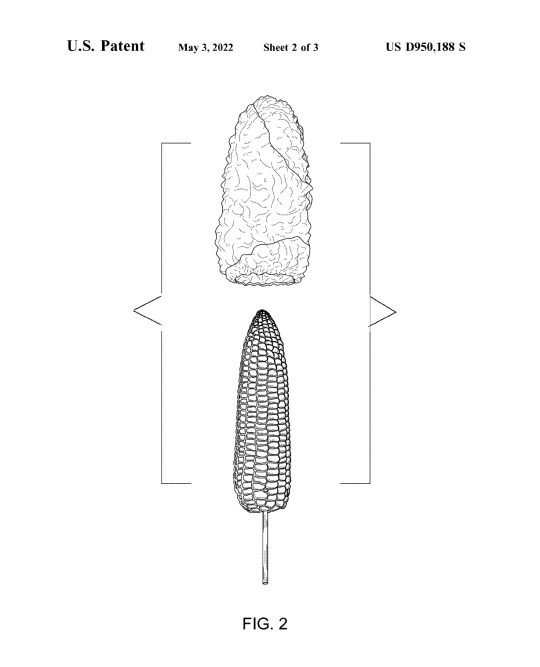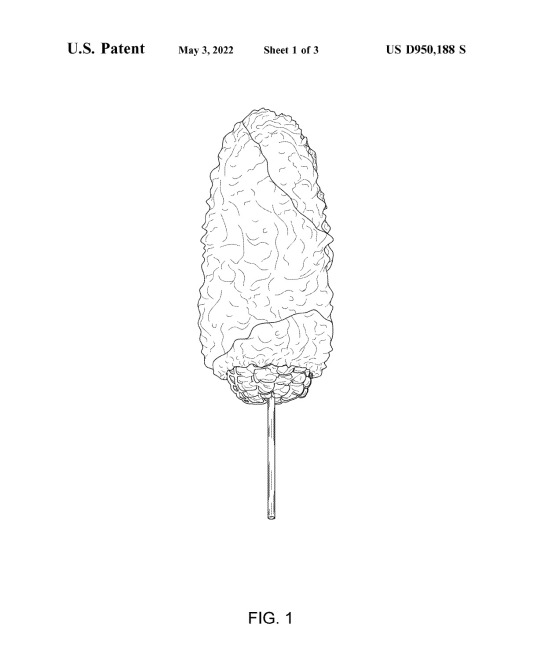#frankenfood
Note
Over 10,000 years of GENETIC MODIFICATION is on your plate!
Any grain, bean, or leafy green is a product of HUMAN INTERVENTION! ANY fruit you can purchase is CHOCK FULL of GMOS.
If you'd like to stay away from genetically modified ingredients, you NEED to start foraging your own food. ANYTHING that can be grown by humans is genetically modified. Think about it... planting something, picking the best crop, replanting, IS genetic modification.
I'll be praying for you and yours 🙏💖
What you are speaking of is selective breeding.
Selective breeding is limited by the life cycle
of the plant and the genetic variants that are
naturally present. Selective breeding is the
process of developing a plant or animal based
on selecting desirable characteristics of the
parent. Selective breeding is the mating process
of two organisms.
Genetically modified organisms (GMOs) are
those that have had their DNA directly altered
through genetic engineering. Introducing new
genes. Genetic modification combines two
organisms that could never breed naturally.
Transgenic crops are not in harmony with
nature. GMOs have been shown to toxically
affect several organs and systems of the body.
These are not the same thing.
More than 70% of foods sold in the US are
derived from genetically modified organisms (GMOs).
Yes, it's quite a feat to eat well today and keep one's family safe from frankenfoods and murderous products. But it can be done.

#gmo#organic#selective breeding#frankenfood#gardening#agriculture#nature#cancer#allergies#monsanto#bayer#glyphosate#genetically modified#toxic foods#toxic#healthy living#carcinogens#dna#pesticide#fertilizer
4 notes
·
View notes
Text
hALLOWEEN fRANKENFOOD!
2 notes
·
View notes
Text
0 notes
Text

#fake food#Frankenfood#processed#Artificial ingredients#poison food#healthy#5d#riseaum#grateful#organic#health#organic food
0 notes
Photo


Issued this week—D950,188, for a design for a “Chicken Cob.”
1 note
·
View note
Text
idgaf if i haven't been to a mcdonalds since i was like 15 i will be up in that drive thru as soon as those squishmallow happy meals drop
#words#lmao#personal#squishmallow#squishmallows#the food is SO shitty but i have to have one#congrats mcdonalds you've officially convinced me to buy your bullshit frankenfood for a toy lol
13 notes
·
View notes
Photo

School Lunches Are Microwaved FrankenFood
0 notes
Photo

School Lunches Are Microwaved FrankenFood
0 notes
Text
I don’t morally object to nutritional-fortification-via-genetic-modification, but I do wish the whole “and this is why GMOs are Good, Actually” project people like to trot out to justify the whole industry wasn’t framed around the assumption that there are no beta carotene-rich crops suitable for the wet tropics. It shows a certain incuriosity unbecoming of a scientist, and dare I say it, a bit of a savior complex.
#i'm not scared of 'frankenfood'#but i don't trust the future of the human food supply#to people who apparently don't know what a sweet potato is
0 notes
Text

Adam Frankenstein, procreate, ~30 mins
Art class has daily sketch prompts and todays was “Frankenfood.” I don’t know what that is and I refuse to look up the definition— I wanted to draw Adam working at knock-off McDonalds, okay?
#digital arwork#gothic lit art#gothic literature#adam frankenstein#frankensteins creature#frankenstein#i’m sorry#y’all I promise I draw more than just Adam#I’ll post a Dorian Gray or Dionysus sketch eventually I swear
50 notes
·
View notes
Text
Take you ice cream medicine!
0 notes
Text
Welcome to Safeway. Just like so many other big chain grocery stores, 99% of the stuff is garbage and will cause you harm if you continue to eat it. Don’t shop here. Support your local farmer or grow your own. Or… Join me in business and I’ll show you how to up your nutrition game while helping others!
#safeway#poisonfood#toxic food#gmos#artificial food#artificial ingredients#endocrine disruptors#frankenfoods#healthy#organic#health#angelo mycorrhizal#riseaum#5d
0 notes
Text
The word “processed” has become something of a slur.
Say “processed food” and most of us picture unhealthy, cheap junk. Fresh food straight from the garden or the field is good. Once we’ve put it through a processing plant or a laboratory, we’ve removed its halo qualities and added a bunch of bad ones. That means meat substitutes are no better than junk food.
But this perspective is short-sighted. We’re not going to feed billions a nutritious diet sustainably without food processing. The growing backlash against processing is one that neither people nor the planet can afford.
The benefits of processed food
Processed food is more than Coca-Cola, Dairy Milk chocolate, and ready meals. Most plant and animal products go through some form of processing to convert them into something that we can—and want to—eat. We mill grain into flour to make bread. We butcher and debone animals to get meat. We pasteurize milk.
Processed foods have brought us countless benefits, many of which we quickly forget. Iodized salt is just one example; iodine deficiencies used to be common across the world, leading to increased risks of stillbirths and miscarriages, significant reductions in IQ, and reduced cognitive development. Most of the world now consumes salt with iodine added, and many countries have eliminated this deficiency. By adding nutrients to food, we’ve been able to address a number of other micronutrient deficiencies.
We’ve been able to preserve food and increase its shelf life, reducing food waste. We’ve reduced the spread of food-borne diseases. Those with food allergies and intolerances can now eat a balanced diet. We don’t need to spend the day preparing food—this has been particularly important for the educational and career development of women. Last but not least: taste. Our shelves are now lined with great-tasting foods.
Of course, when people talk about “processed” food they’re often talking about ultra-processed food (UPF). These snacks and prepared meals are designed to have a longer shelf life and be more convenient and palatable. Corporations work hard to find the “Goldilocks” flavor profile we can’t resist by adding sugar and fat to make food as tasty as possible. Many describe these finely tuned combinations as addictive.
It’s true that increased consumption of ultra-processed food has been linked to poor health outcomes. It has been associated with lower consumption of essential nutrients, such as vitamins C, D, and B12. The more of these foods we eat, the more likely we are to be overweight or obese. This puts us at higher risk of health conditions like cardiovascular disease, diabetes, and cancer. Ultra-processed foods are easy to overconsume.
The problem with most UPFs is that they are higher in calories, sugar, and fat. And they’re lower in protein and fiber, the nutrients that keep us full.
But this isn’t inherent to food processing itself. What matters is what corporations add to our food. They can create healthier foods if they want to—or if we demand it.
The growing backlash against meat substitutes
One area where I see the biggest backlash against processing is with meat substitutes.
These products try to emulate the experience of meat and include plant proteins such as soy-based sausages; Impossible and Beyond Meat burgers; proteins made from fermentation, such as Quorn, and lab-grown meat.
Passionate meat eaters and vegans don’t always see eye to eye, but they do often agree that natural is best. Vegans push back against meat substitutes because they’d rather people go straight to natural plant foods like peas, beans, and lentils. Meat eaters push back on these products for their artificiality, calling them “Frankenfood.”
Headlines critical of these foods go something like this: “People have told you that meat substitutes are super healthy, but they’re lying to you.”
So are meat substitutes better for your health or are they part of an elaborate con?
Well, “healthy” compared to what?
Are they better than meat equivalents? Are you better off going for an Impossible or Beyond Meat burger than a beefburger? Or a soy-based sausage over a pork one? Possibly.
I crunched the numbers on the nutritional profile of meat substitute products and compared them to meat. (You can find a graph of this comparison here.) To their credit, meat substitutes tend to be lower in calories and saturated fat and higher in fiber. To their detriment, some are lower in protein, and importantly, often contain lower-quality protein, meaning they contain less of the essential amino acids that we need.
When it comes to sodium, it’s a bit of a mixed bag. Substitute burgers tend to be comparable to beef. Substitute sausages look bad, but they contain less salt than their pork equivalents.
Many substitute products are now fortified with Vitamin B12, iron, and calcium. The Impossible burger actually has more Vitamin B12 and iron than beef. Many plant-based milks are fortified too. (I compared the nutrition of dairy and plant-based milks here.)
On balance, they’re probably a bit better for our health than their meat equivalents.
Are they better than whole, plant-based foods? Less likely, but possible, depending on the nutrients you’re trying to optimize for. They are higher in protein and have micronutrients added that plants don’t have much of, such as Vitamin B12. But they are also higher in saturated fat and salt.
However, this showdown between natural plant foods and meat substitutes is kind of beside the point. People who want a whole, plant-based diet aren’t the target for these products. If people want to switch to plant proteins such as peas and lentils, great. But this group is a minority. What meat substitutes offer is an easy swap for people who want “meat-like” meals. Many want an experience similar to meat: Substitutes try to give them this without killing animals—and without the high environmental cost of farming meat.
To have a chance of meeting our global climate targets, ending deforestation, and protecting the world’s wildlife, we need to eat much less meat. Both plant foods and meat substitutes have a much lower carbon footprint, use much less land, and cause less water pollution than meat. The environmental toll can be 10 to 100 times lower than that of beef or lamb.
Meat substitutes are our best shot at feeding the world without destroying it. The backlash to these products is counterproductive. And the blanket dismissal of such foods as “ultra-processed” isn’t helping. Most are defined as ultra-processed based on the methods used to produce them. But if we list the reasons UPFs are bad for our health, meat substitutes have almost none of those qualities. As shown above, they are generally not high in calories—most are lower than meat. They have less saturated fat, almost no added sugars, and are higher in fiber.
What they do have are additives. Impossible Foods adds them to give its burgers a juicy, meat-like texture. Many companies add binding agents and preservatives to extend their products’ shelf lives. People get freaked out by lists of ingredients they don’t recognize. But the notion that how pronounceable something is can determine whether we should eat it is not scientifically sound. You can probably pronounce “lead” and “mercury,” but I don’t recommend seasoning your dinner with them.
This is still an area that needs more research, but I’ve seen little good evidence that additives or sweeteners consumed within regulatory guidelines have negative health impacts.
We shouldn’t be eating them all the time, but as part of a diverse diet, there is little to suggest meat substitutes are bad for our health. In fact, some can be a nutritional plus.
Food processing could alleviate malnutrition for billions
Meat substitutes are mostly targeted at wealthy consumers. But the implications of a backlash to processed food are just as harmful for people with less money—if not more so.
More food processing, not less, could improve health and nutrition in developing countries.
Billions of people in the world suffer from “hidden hunger”—they don’t get enough of the micronutrients that are necessary for good health. The preferred way to address this would be for them to eat a more diverse diet.
That’s a nice pipe dream, but it’s decades away. These billions can’t afford a healthy, balanced diet even if they spend all of their income on food. The goal is to make sure their incomes rise, but this will take time.
What are we going to do in the meantime? Accept that billions are left malnourished and billions of children will never reach their potential?
We could solve this problem quickly and cheaply with more food processing. Simply add micronutrients to staple foods. Micronutrient fortification—the addition of key vitamins and minerals to foods such as flour, salt, bread, and cereals—is incredibly cost-effective. It can cost mere cents or a few dollars per person per year. To move from a diet that meets an individual’s energy needs—eating cheap staples that are high in calories—to a nutritionally complete or healthy diet will cost someone at least a few dollars per day. Micronutrient fortification would cost just a few dollars per person per year.
This is also true of meat and dairy products. In richer countries, we consume a lot of meat, and most people could easily cut back. Poorer countries eat very little meat, if any. Without nutritious alternatives, eating more animal products might actually be good for health. The problem is that meat is expensive—economically as well as environmentally. It’s hard to get cheap meat without sacrificing welfare and environmental standards. So we face a dilemma: Increasing meat consumption for those with lower incomes would improve nutrition but result in a larger environmental footprint.
But if meat substitutes become cheaper, we have the opportunity to make low-cost, high-quality protein available for everyone. People will be able to improve their nutrition long before they can afford to buy more meat. What’s even more promising is that consumers in low- and middle-income countries seem to be more accepting of meat alternatives. We don’t have a lot of data on these markets, but large surveys across China, India, and the US suggest that Chinese and Indian consumers would be much more likely to buy plant-based substitutes and lab-grown meat than Americans.
I’m all for a predominantly whole-food diet. But used in the right way and in moderation, processed foods could be a big boon for global nutrition. Stigma against them hinders such efforts, so rather than shunning food processing, we should embrace it in the appropriate contexts.
It’s not the process; it’s what we add that matters
I’m not here to defend ultra-processed foods or big food corporations. They’ve hijacked our food system in many ways and have created a plethora of health problems. But we need to stop throwing all processed foods into one group.
The problem is not the process itself; it’s what we add and how we do it. We can use processing to enhance nutrition or hinder it. We can embrace it where it adds value and boycott it where it doesn’t.
The backlash against food processing is a luxury that the world can’t afford to embrace. It’s not good for people or the planet. Nutritionally sound processed foods are one of many tools that will help nourish billions without destroying the environment.
22 notes
·
View notes
Text
FRANKENFOODS
Most health problems facing African Americans today are the direct consequence of "Frankenfoods." Heart attacks, strokes, adult and childhood cancers, attention deficit hyperactivity disorder (ADHD) autism, allergies, and autoimmune diseases all have their basis in the standard dietary practices all across the country.
Malnutrition caused by the lack of natural food and fresh produce has been a problem for many, many years. Fast food malnutrition - is not apparent as it would be without the influence of conventional medicine. For example, fast food malnutrition creates chronic inflammation and causes weight gain, but subtle micronutrient deficiencies disproportionately target the brain.
Fast food malnutrition goes undetected mainly because conventional medicine has developed its quick-fix solutions that allow us to destroy our bodies with fast food even as we appear perfectly healthy.
Prescriptions and pills have created a new normal, our blood vessels and organs are routinely damaged by our chemical - and calorie-dense diets, but the medical establishment persuades us that our health is beyond our control. We need pharmacologic solutions to survive and thrive. Be aware of the impact of the fast-food diet/Frankenfoods.
3 notes
·
View notes
Text
What happened?
#BlackRock and #Vanguard happened.
They buy all the houses in entire neighborhoods and leave them empty. Soon after local businesses go out of business and either move elsewhere or close shop.
No shops, the people end up moving where the shops are.
This is how American land is being cleared and people are forced to live in crowded metropolitan cities.
This will make it easier for the globalist scum to herd everyone into smart city prisons.
It's the parasitic oligarchs ultimate goal.
New World Order and people locked into Smart City Prisons where they will not be able to plant their own food and own livestock, therefore have to do what they're told by the one world totalitarian system to get fed.
And will have to eat toxic frankenfoods and bugs.
Get jabbed nonstop as required.
2 notes
·
View notes
Text
looking at the deleterious results of class war on the lives of proletarians (working so much you get sick or die or can’t see your family, eating frankenfood and developing cancer and obesity because there’s no push for the government to subsidize healthy food, more and more people having to suck dick to survive) and dismissing it or even praising it as empowering is the most american thing i can think of. the american right and the astroturfed left are totally united on this and just disagree on which awful symptoms of a dying society should be ignored/praised/never seen as an issue that also is solvable
5 notes
·
View notes